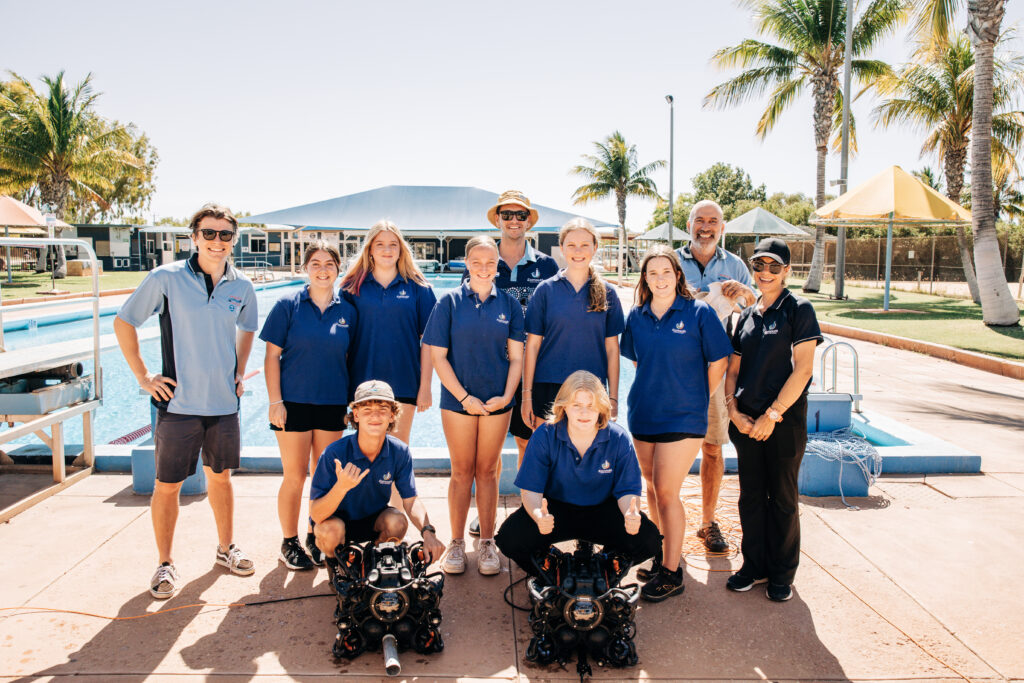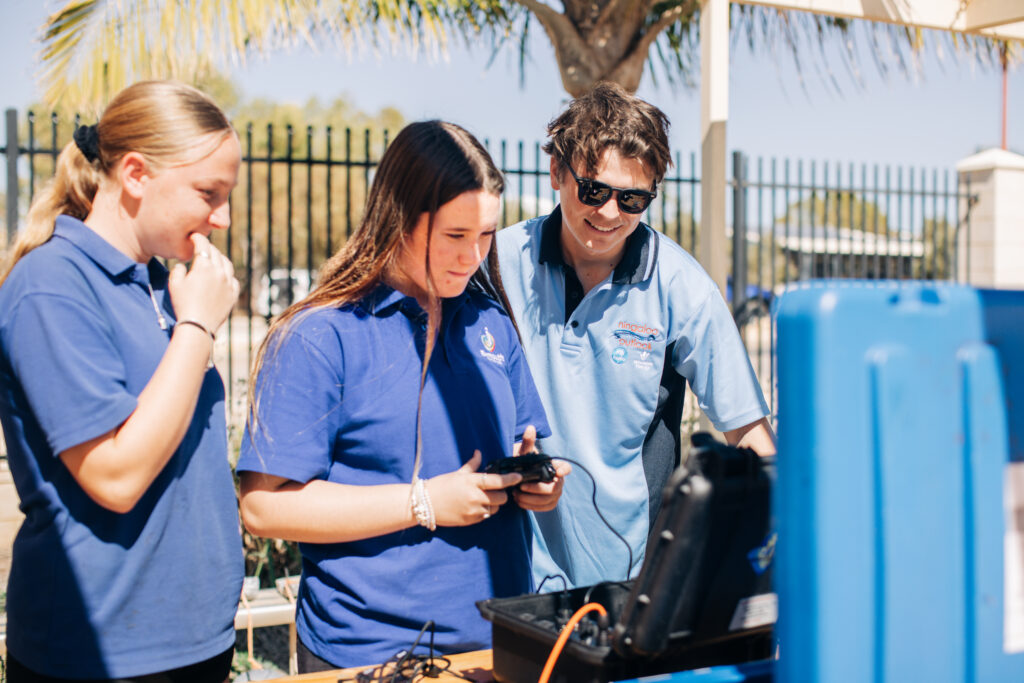Exploring the Depths: Underwater ROVs Making a Splash for National Science Week
As part of National Science Week, two members of our Ningaloo Outlook Deep Reefs team, Nick Mortimer and PhD student Logan Hellmrich, visited Exmouth District High School to engage with science students and demonstrate how we use Remotely Operated Vehicles (ROVs). Students from years 8, 9, and 10 had the opportunity to gain hands-on experience with the equipment and learn how CSIRO is uncovering insights about their World Heritage-listed backyard.
Logan Hellmrich and Nick Mortimer with students and teachers from Exmouth District High School. Photo credit: Violeta Brosig (Blue Media Exmouth).
Every student had a go at piloting an ROV and completing underwater tasks in their local pool. Tasks included completing an underwater trail of science questions, identifying submerged images of local fish and retrieving objects from the pool using the ROV’s manipulator. The session finished up with a tribute to the Olympics with a 100 m ROV relay race between two teams of students.
Students learning how to drive an ROV with help from Logan Hellmrich. Photo credit: Violeta Brosig (Blue Media Exmouth).
While having lots of fun the students got to learn how to drive an ROV, and how ROVs support scientific research. The exercise ended with an intense question and answer session on topics of science, engineering and careers.
Exmouth school student learning to drive the ROV. Photo credit: Violeta Brosig (Blue Media Exmouth).
The Ningaloo Coast World Heritage Area is on the remote western coast of Australia where the 300 km long fringing coral reef is within walking distance of the coastline. The combination of the arid landscape, underwater topography and oceanic currents creates a unique environment making this stunning region one of the ideal places for large megafauna, including whale sharks and turtles, to visit. The reef is comprised of shallow lagoons and deeper offshore waters creating a diverse array of habitats, creating a home for a range of marine life.
The Woodside-CSIRO Ningaloo Outlook (Phase 2) marine research partnership is investing AUD$7.0 million over five years into further developing new knowledge about the Ningaloo Coast World Heritage Area. The 4 themes of Ningaloo Outlook aim to increase our ecological understanding of the Deep Reefs, Shallow Reefs, Whale Sharks and Turtles in the area.



